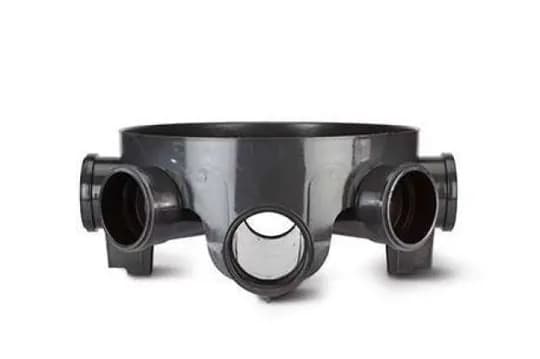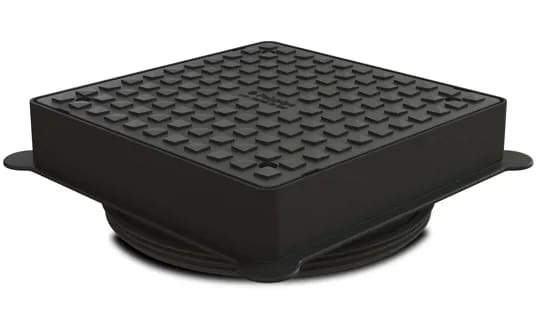Inspection Chambers
(17 Products)Inspection chambers provide access points to the underground drainage system. These access points are crucial for inspecting, maintaining, and cleaning the drainage system. When issues arise, such as blockages or damage to drain pipes, inspection chambers allow for easy entry to identify and address problems.
We stock a variety of quality inspection chambers, meticulously curated to cater to the unique requirements of your drainage projects.
What Are Inspection Chambers?
Inspection chambers, also known as mini access chambers or manholes, are underground structures designed to provide access points to a drainage system.
They are strategically positioned at key locations along the drainage network, allowing easy access for inspection, cleaning, maintenance, and clearing blockages.
These chambers consist of several crucial elements, each serving a specific purpose in ensuring the smooth operation of your drainage system.
One of the primary functions of inspection chambers is to facilitate the clearing of blockages in the drainage system. By providing access points at critical junctions, it becomes easier to locate and remove obstructions, preventing backups and flooding.
Components of Inspection Chambers
An inspection chamber typically consists of three main components: the base, riser, and cover.
The base serves as the foundation, the riser connects the base to the cover, and the cover provides access and sealing.
Inspection Chamber Base
The inspection chamber base serves as the foundation upon which the rest of the inspection chamber is constructed.
It is a sturdy, sealed structure that supports the weight of the chamber riser and covers while withstanding the ground's pressure.
The base is typically made of durable materials like concrete or plastic, ensuring it can handle the demands of underground drainage.
Inspection Chamber Riser
The inspection chamber riser is a vertical section that connects the base to the cover. It varies in height depending on the chamber's intended use and the maximum depth of the drainage system.
Risers come in various diameters and can be sealed to prevent unwanted access.
For a watertight seal between the riser and base, use inspection chamber sealing rings.
Inspection Chamber Cover
The inspection chamber cover is the topmost component, and it provides the means for access to the chamber.
It must be strong enough to withstand ground-level traffic and provide a secure seal when closed, preventing debris or unauthorised access.
Inlets and Directional Components
Within the inspection chamber, you'll find inlets and directional components that ensure the proper flow of drain pipes.
These components play a vital role in directing wastewater towards the appropriate branch pipes, ensuring efficient drainage.
Benefits of Inspection Chambers in Drainage Systems
- Facilitates convenient access for maintenance and repairs.
- Facilitates early issue detection to proactively prevent major problems.
- Ensures worker safety during maintenance activities.
- Accelerates the repair process for operational efficiency.
- Extends the lifespan of underground infrastructure.
- Mitigates environmental risks by preventing sewage spills.
Frequently Asked Inspection Chambers Questions
Are There Regulations Governing the Installation of Inspection Chambers?
Yes, there are regulations and building codes that dictate the placement, specifications, and requirements for inspection chambers. Compliance with these regulations is crucial to ensure the proper functioning of drainage systems.
Can Inspection Chambers Be Used in Both Residential and Commercial Settings?
Yes, inspection chambers are versatile and can be used in various applications, including residential, commercial, and industrial settings.
They come in different sizes and configurations to accommodate diverse needs.
How Often Should Inspection Chambers be Inspected and Maintained?
Regular maintenance and testing of drainage inspection chambers are essential for the longevity and functionality of the entire drainage system.
Inspection chambers make it possible to assess the condition of pipes, inlets, and other components, allowing for timely repairs or replacements.
The frequency of inspections may vary depending on factors like usage and environmental conditions.
What Are the Signs That an Inspection Chamber May Have Blockages or Issues?
Signs of blockages or issues in an inspection chamber include slow drainage, foul odours, gurgling noises, or visible debris inside the chamber.
If you notice any of these signs, it's essential to inspect and address the problem promptly.








+215mm+Effective+Height+Black.jpg)
+430mm+Effective+Height+Black.jpg)













